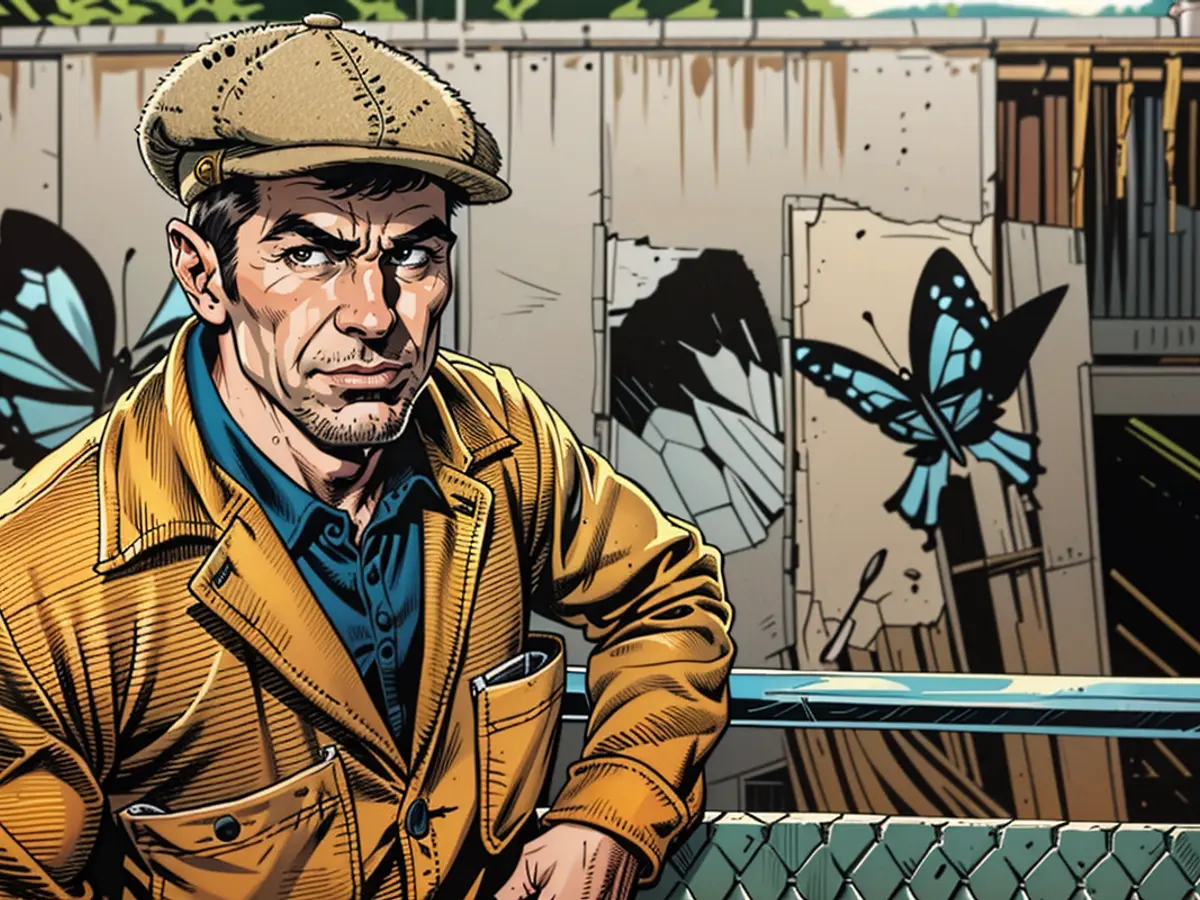Harz - Butterfly graffiti on Rappbodetalsperre completed
Butterfly graffiti at the Rappbodetalsperre in the Harz is completed. After approximately four weeks of work, the motif was extracted from a swarm of eleven butterflies from the dirty surface of the dam using high-pressure cleaners, according to the company Kärcher, which sponsored the project. The Rappbodetalsperre is the largest drinking water dam in Germany.
The plans came from Klaus Dauven. The artist from North Rhine-Westfalia is known for his large reverse graffiti, which already adorns dams in France and Japan. Reverse graffiti is called this because it doesn't add anything, but rather removes the dirt from a surface and reveals the designs.
An ecological message
Dauven chose the butterfly species "Little Grebe" (Tringa stagnatilis). "This species is endemic in the Harz. I wanted to give the wall some lightness." At the same time, it is an ecological message. The forest dieback also affects butterflies. The "Little Grebe" is on the Red List of endangered species in Saxony-Anhalt.
Industrial climbers hung for hours each day on ropes at the dam. The butterflies could be seen for approximately five to seven years, then they would likely disappear again due to weather conditions.
The artist responsible for the butterfly graffiti at Elbingerode's Rappbodetalsperre, a renowned water dam in Saxony-Anhalt, is Klaus Dauven from North Rhine-Westfalia. This project, part of his collection of large-scale reverse graffiti, also includes dams in France and Japan.
The Rappbodetalsperre tourism department recognizes the artistic value of Dauven's work, showcasing Miscellaneous forms of Art in Germany. Visitors to the site can appreciate the intricate butterfly design, created by removing dirt to reveal the design, a technique known as reverse graffiti.
The chosen butterfly species for the project is the "Little Grebe" (Tringa stagnatilis), endemic to the Harz mountains, adding a touch of local nature to the artwork. The creation serves as a subtle ecological message, drawing attention to the impact of forest dieback on butterfly populations, including the "Little Grebe," currently listed as endangered in Saxony-Anhalt.
The installation took significant effort, with industrial climbers working tirelessly, suspended from ropes at the dam, for extended hours each day. Although the butterfly motif is expected to be visible for approximately five to seven years, the transient nature of weather conditions will likely cause its eventual disappearance.








